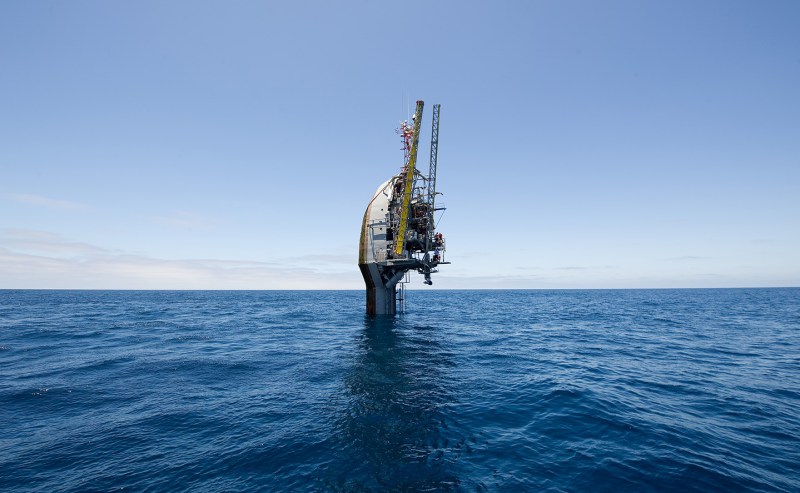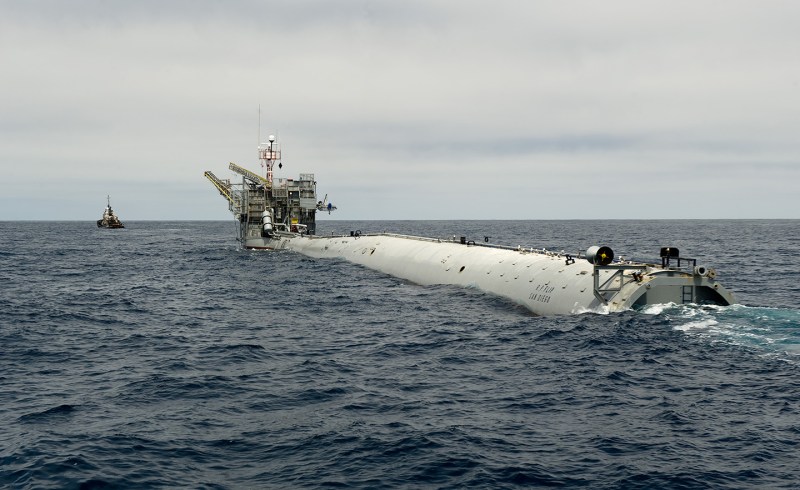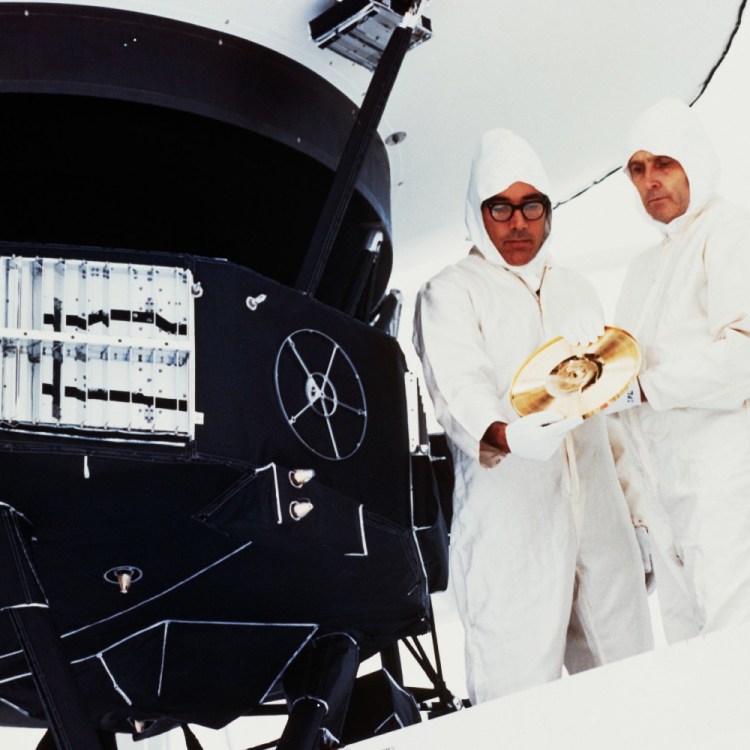Don’t be concerned: this ship isn’t sinking. It’s just flipping itself for science. As part of the United States Research Fleet, the Floating Instrument Platform, or “FLIP,” as its known, is designed to rotate a “full 90 degrees by submerging 300 feet of its hull and leaving just 55 feet of bow above the water,” according to Atlas Obscura.
The result? A quiet, stable platform for researchers to get precise scientific measurements at sea. The ship does not have an engine of its own, so it is towed out to sea and laid flat at first. The flip takes about half an hour.

Because of this, the boat must work for life in two orientations. Though the living quarters are cramped, FLIP is a favorite among the researchers, says Atlas. The ship was constructed in 1962 to conduct research for the U.S. Navy on how ocean conditions affect acoustics.
Robert Pinkel is a professor emeritus at Scripps Institution of Oceanography at the University of California, San Diego, and has been using FLIP for research nearly as long as it has been in service. He says that it was built in the decade that people were trying to reach the moon. Therefore, thinking big “was on everyone’s mind.”
The original design was not intended for overnight stays, but instead, was designed for scientists to board the platform each day to do research and then head back to a different ship to sleep. But Pinkel says that it quickly became apparent that no one wanted to go back, because FLIP was more comfortable and also because it provided a good working platform all 24 hours. With no engine, it is a very quiet place to work.

“When things were working, you didn’t want to leave your experiment to go back to a mothership,” Pinkel said.
John Hildebrand, Pinkel’s colleague, has used the vessel to study whale vocalization. Other researchers have used its silent profile to study the sounds of the smallest animals in the planet: plankton. FLIP can shut off its generators and use electrical power for short periods of time. This means scientists can hear the “faint Doppler effect of the microorganisms moving toward or away from the ship.”
This article was featured in the InsideHook newsletter. Sign up now.























